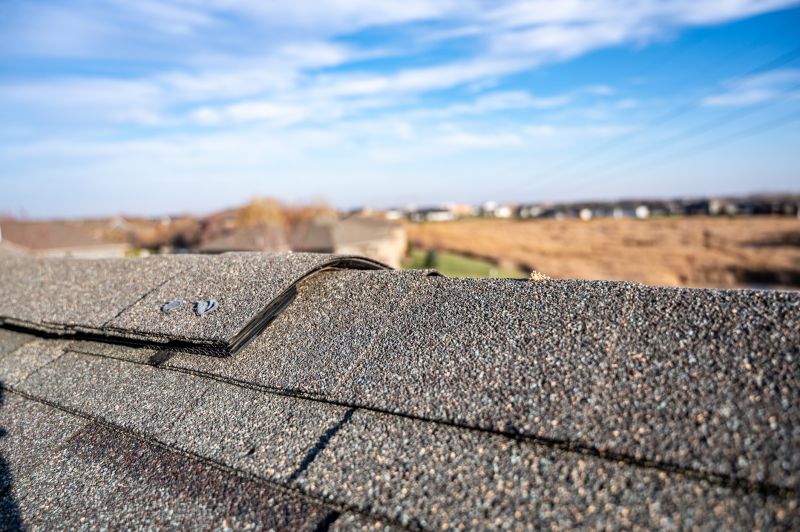Expert Picks for Shingle Roof Maintenance and Repair Products
Choose from trusted tools and materials proven to improve the longevity and performance of shingle roofs.
 Maintaining a shingle roof requires a variety of specialized products designed to facilitate repair, cleaning, and ongoing maintenance. From tools that help identify damage to materials that ensure proper sealing and protection, the right selection can make roof service tasks more efficient and effective. These products are essential for homeowners, contractors, and roof maintenance professionals seeking to preserve the integrity of their roofing systems.
Maintaining a shingle roof requires a variety of specialized products designed to facilitate repair, cleaning, and ongoing maintenance. From tools that help identify damage to materials that ensure proper sealing and protection, the right selection can make roof service tasks more efficient and effective. These products are essential for homeowners, contractors, and roof maintenance professionals seeking to preserve the integrity of their roofing systems.
Top Overall Option
Multi-Functional Roof Repair Kit
A comprehensive roof repair kit typically includes a variety of essential tools and materials such as sealants, patching compounds, replacement shingles, and application tools. Designed for versatility, it supports various repair tasks, from minor leaks to shingle replacement, making it a practical choice for homeowners and professionals alike. The kit often features user-friendly components suitable for different skill levels, enabling effective maintenance and repairs with a single purchase.
Types of Products For Shingle Roof Service
Roof Sealants and Caulks
Used to seal cracks and prevent leaks, these products are essential for minor repairs and maintenance.
Roof Replacement Shingles
Replacement shingles are necessary for repairing or replacing damaged sections of the roof.
Roof Cleaning Brushes
Specialized brushes help remove moss, algae, and debris to maintain roof integrity and appearance.
Moss and Algae Removal Solutions
Chemical solutions designed to eliminate biological growth that can damage shingles over time.
Roofing Nailers and Fasteners
Power tools that facilitate quick and secure shingle installation or replacement.
Safety Harnesses and Roof Anchors
Safety equipment crucial for secure movement and work at height during roof service.
Roof Inspection Tools
Includes drones, binoculars, or inspection mirrors to assess roof condition without extensive climbing.
Shingle Removal Tools
Tools designed to safely detach damaged shingles for replacement or repair.
Roofing Underlayment
Protective layers installed beneath shingles to add extra waterproofing and durability.
Leak Detection Devices
Tools that help identify leaks and weak points in the roof structure.
Ladder Stabilizers
Equipment to enhance ladder stability and safety during roof work.
Roof Ventilation Products
Components that improve airflow and prevent moisture buildup inside the attic.
Gutter Cleaning Tools
Assist in clearing debris from gutters to prevent water damage on the roof edge.
Roof Edge Protection
Barriers or guardrails that provide additional safety along roof edges.
Weatherproofing Membranes
Materials used to reinforce waterproofing around vulnerable areas.
Popular Choices
Popular for quick sealing of minor leaks and cracks in shingles.
Convenient patches designed for easy application on damaged areas.
Effective solutions for removing moss, algae, and dirt buildup.
Widely used for efficient shingle detachment during repairs.
Essential safety gear for working at heights on roofs.
Handheld or drone-based devices for detailed roof assessments.
Popular power tools to speed up shingle installation and repair.
Commonly used to maintain clear gutters and prevent water damage.
Trending for improving attic airflow and preventing moisture issues.
Versatile tape for sealing and reinforcing vulnerable roof areas.
Popular for enhancing energy efficiency and protecting roofing structures.
Effective for sealing edges and preventing water infiltration.
Helpful for inspecting hard-to-see areas safely.
Commonly used for added safety during roof access.
Popular for maintaining the aesthetic and health of shingles.
Frequently chosen for added waterproof protection during repairs.
When working on a shingle roof, safety is paramount. Products such as safety harnesses, roof brackets, and non-slip footwear are vital for ensuring secure movement and stability during service activities. In addition, cleaning tools like roof brushes and moss removal solutions help maintain the roof’s appearance and prevent damage caused by buildup or biological growth.
Repair products including sealants, patching materials, and replacement shingles are critical for addressing leaks, cracks, or damaged sections. Proper application of these materials can extend the lifespan of the roof and prevent further issues. For more extensive repairs, specialized tools like roofing nailers and shingle removal tools can streamline the process, saving time and effort.
Overall, selecting the appropriate products for shingle roof service depends on the specific tasks at hand, the roof’s condition, and safety considerations. Investing in quality tools and materials can support effective maintenance routines, helping to protect the structure and prolong the roof’s service life.
Key Buying Considerations
- Compatibility with existing roofing materials and shingles.
- Ease of use, especially for DIY projects or professional use.
- Durability and weather resistance of the products.
- Safety features and compliance with safety standards.
- Effectiveness of sealants and patches in preventing leaks.
- Compatibility with roof pitch and structure.
- Ease of application and clean-up process.
- Product reviews and user feedback for reliability.
- Availability of replacement parts or additional supplies.
- Storage and portability of tools and kits.
- Cost-effectiveness over the long term.
- Manufacturer reputation and warranty options.
- Environmental conditions typical to the location (e.g., heavy rain, snow).
- Compatibility with the size and extent of the repair project.
- Availability of technical support or customer service.
